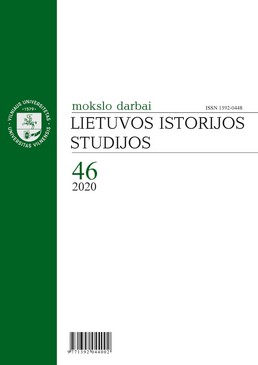Tarp Lietuvos ir Lenkijos padalyti ūkiai: Lietuvos ūkininkų problemos ir jų interesų gynimas 1923–1939 metais
Farms Divided between Lithuania and Poland: The Problems of Lithuania’s Farmers and the Defence of Their Interests, 1923–1939
Author(s): Leonas NekrašasSubject(s): Diplomatic history, International relations/trade, Studies in violence and power, Interwar Period (1920 - 1939), Peace and Conflict Studies
Published by: Vilniaus Universiteto Leidykla
Keywords: farms divided between states; borderland; Lithuania; Poland; border conflict;
Summary/Abstract: During the interwar years the situation between Lithuania and Poland was tense. Lithuania never stopped claiming Vilnius as its capital city and did not recognize it as a part of Poland – therefore these countries did not have diplomatic relations. Travelling possibilities between these alienated states were greatly restricted and (as Lithuania did not recognize the demarcation line dividing both countries as an official state border) their borderland was an area of frequent violence, provocations, and ever present tension. The border situation created a problem for local people – the demarcation line (conclusively established in 1923 after the dissolution of the demilitarized neutral zone that separated both states) divided the farms of many local farmers leaving thousands of hectares of farmland belonging to residents of Poland in Lithuania and vice versa. Both countries agreed to allow the farmers of these divided farms to cross the demarcation line to continue to use and work their land. However, these people were directly caught up in the feud between their antagonistic states and suffered from it. This paper explores the struggles experienced by Lithuania’s farmers (frequently and deliberately obstructed by Poland’s border guards) and the efforts of Lithuanian state institutions to defend their interests. The analysis showcases an unorthodox situation and uncovers unique ways of communicating and solving problems established between states that had no diplomatic relations in the interest of their local citizens. The methods used gradually evolved from the use of the basic “An eye for an eye“ type of retaliation (reacting to obstruction by causing equivalent difficulties to farmers of the opposing country) to frequent meetings between local officials of both nations in a borderland marked by tension and conflict. Various methods that were used to better the situation of local farmers are analysed. The paper uncovers the core principles that determined and guided the policy of Lithuanian state institutions. Most significantly, it was a recognition of importance of reacting to every obstructive action made against Lithuanian citizens. There was also a great avoidance to act (or react) in a way that could be interpreted as recognizing the demarcation line as the state border. The situation regarding the issue of the divided farms after the Polish ultimatum and the establishment of diplomatic relations between Lithuania and Poland in 1938 is examined.
Journal: Lietuvos istorijos studijos
- Issue Year: 2020
- Issue No: 46
- Page Range: 67-81
- Page Count: 15
- Language: Lithuanian

